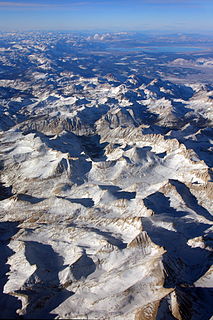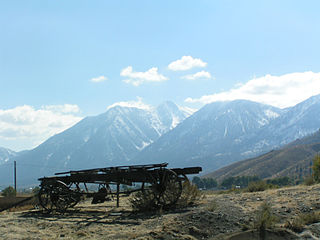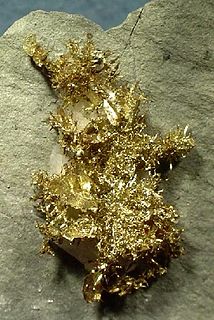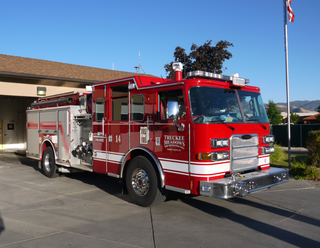Western Nevada | |
|---|---|
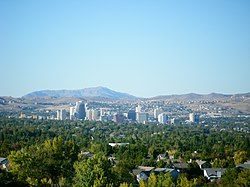 | |
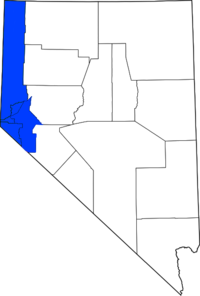 The counties most commonly associated with Western Nevada with Churchill County not shown in blue | |
| Country | |
| State | |
| Counties | Douglas Storey |
| Largest city | |
Western Nevada (WNV) is a region and the northwestern portion of the U.S. state of Nevada that includes Reno, Carson City, Carson Valley and Virginia City. Lyon County and Churchill County are sometimes also referred to as part of Western Nevada. [1]
In geography, regions are areas that are broadly divided by physical characteristics, human impact characteristics, and the interaction of humanity and the environment. Geographic regions and sub-regions are mostly described by their imprecisely defined, and sometimes transitory boundaries, except in human geography, where jurisdiction areas such as national borders are defined in law.
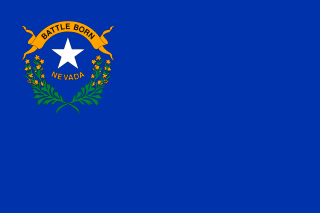
Nevada is a state in the Western United States. It is bordered by Oregon to the northwest, Idaho to the northeast, California to the west, Arizona to the southeast, and Utah to the east. Nevada is the 7th most extensive, the 32nd most populous, but the 9th least densely populated of the U.S. states. Nearly three-quarters of Nevada's people live in Clark County, which contains the Las Vegas–Paradise metropolitan area where three of the state's four largest incorporated cities are located. Nevada's capital is Carson City.
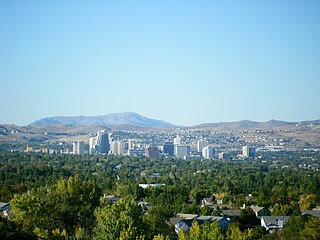
Reno is a city in the U.S. state of Nevada, located in the northwestern part of the state, approximately 22 miles (35 km) from Lake Tahoe. Known as "The Biggest Little City in the World", Reno is known for its casino industry. Reno is the county seat of Washoe County. The city sits in a high desert river valley at the foot of the Sierra Nevada and its downtown area occupies a valley informally known as the Truckee Meadows. The city is named after Union Major General Jesse L. Reno, who was killed in action during the American Civil War at the Battle of South Mountain on Fox's Gap.
Contents
The region is the second most populous in the state (the first being Southern Nevada containing the Las Vegas Valley) with between 530,000 and 615,000 residents, depending on whether Lyon and Churchill counties are included. It is also the historic population center of Nevada, with the state capital in Carson City, the University of Nevada in Reno and several state historic parks, notably Mormon Station State Historic Park in Genoa, the state's first permanent European settlement.

Southern Nevada (SNV) is a region and the southern portion of the U.S. state of Nevada which includes the Las Vegas Valley. It also includes the areas in and around Pahrump and Pioche. Tonopah and Hawthorne are sometimes also referred to as part of Southern Nevada, but all organizations based in the Las Vegas area, such as the Southern Nevada Health District, effectively limit the term to Clark County.

The Las Vegas Valley is a major metropolitan area in the southern part of the U.S. state of Nevada. The state's largest urban agglomeration, it is part of the Las Vegas MSA. The Valley is largely defined by the Las Vegas Valley landform, a 600 sq mi (1,600 km2) basin area surrounded by mountains to the north, south, east and west of the metropolitan area. The Valley is home to the three largest incorporated cities in Nevada: Las Vegas, Henderson and North Las Vegas. Five unincorporated towns governed by the Clark County government are part of the Las Vegas Township and constitute the largest community in the state of Nevada.

The University of Nevada, Reno is a public research university located in Reno, Nevada. Founded on October 12, 1874 in Elko, Nevada is the sole land grant institution for the state of Nevada.
